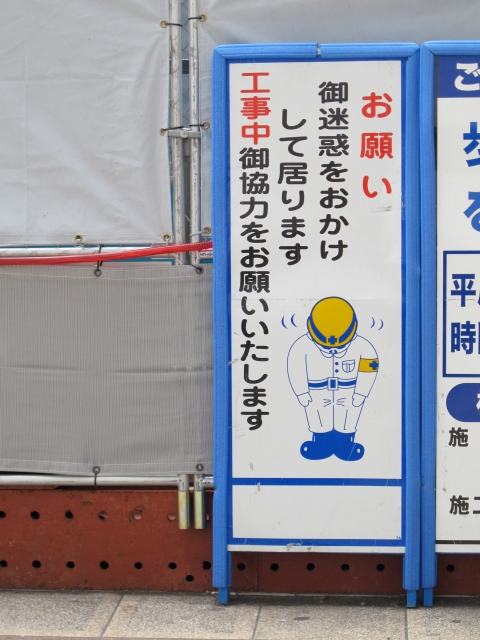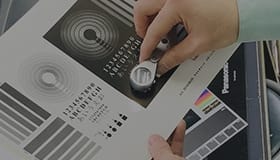Product overview
VG Ink is particularly easy to print on and adaptable to plastics such as soft and rigid PVC, acrylic board, vinyl-coated paper, top-coated polyester film, ABS, cellulose acetate, CAB, and polycarbonate.
- Solvent type ink

Application
- Vinyl stickers, nameplates
-
Automobile, Motorcycle
-
Home Appliance (IoT)
-
Smartphone, Tablet, Smart watch
-
Sensor
-
Game
-
Others
Features, Function
- Gloss ink with excellent printability and blocking resistance.
- Superior adhesion and flexibility to various plastics.
- Color series with excellent weather resistance and resistance properties are available.
- UV Resistance
Substrate
- Vinyl stickers, polycarbonate, Acrylic, and soft and rigid PVC
- PC
- PMMA
- PVC
Dilution
- D-001 SOLVENT (fast) D-002 SOLVENT (standard) D-003 SOLVENT (slow) D-004 SOLVENT (extra slow)
- Dilution: 15 to 20%
- *Do not use other solvents as they may adversely affect curing, adhesion, stencil stability, or other properties.
Promoter
- SM-40 DEFOAMER 2%(For anti-foam and improvement in leveling)
Recommended cleaner
- Screen Cleaner L2 or D-002 SOLVENT
Mesh
- T 150 to 300 mesh (Coverage is 20 to 28m2/kg at 250 mesh)
Drying
- 50 to 60℃ 30 min
Standard colors
-
000 MEDIUM
-
001 VICTORIA
-
002 EXTENDER A
-
003 BRIGHT RED
-
112 CRIMSON
-
121 SCARLET
-
161 SCARLET
-
163 RED
-
177 OPAQUE RED
-
182 RED
-
191 RED
-
221 YELLOW
-
246 LIGHT YELLOW
-
263 REDDISH YELLOW
-
271 OPAQUE LIGHT YELLOW
-
277 REDDISH YELLOW
-
391 BLUE
-
391 C OPAQUE BLUE
-
524 ORANGE
-
525 ORANGE
-
577 OPAQUE ORANGE
-
581 MAGENTA
-
611 WHITE
-
611 C OPAQUE WHITE
-
797 GREEN
-
797 C OPAQUE GREEN
-
821 VIOLET
-
911 BLACK
-
911 C OPAQUE BLACK
- *Color settings for color separation (TC) are also available.
Caution
- Adhesion test must be done before printing as quality of plastic may differ depending on manufacturers or lots. It is also recommended to wipe surface of the printing part with alcohol or mineral spirits to prevent defective print due to static electricity and insufficient adhesion due to plasticizer and additive floating.
- Checking before production: Adhesion and resistance properties may change due to differences in substrates, processes, printing and drying conditions. Be sure to check the adhesiveness and resistance properties before mass production printing
- Ink shelf life: 24 months from production date, unopened.
Safety
- UN No.: 1210
- UN Classification: Class 3 Flammable Liquids (Flash point is over 23 Degree C)
Handling
- Use safety gloves and eyeglasses to protect skin and eyes. If the ink comes in contact with skin, wash with soap and plenty of water (or lukewarm water) and consult with a doctor.
- Containers should be closed tightly after use and stored in a cool and dark place.
- SDS is available upon request. Please request a copy and read it carefully before handling the products.
Resistance
| Test item | Test Conditions | Test results |
|---|---|---|
| Adhesion | JIS K 5600-5-6:ISO2409(cross-cut), 1mm interval 6×6, cellophane tape and peel | 0(no peel) |
| Pencil Hardness | JIS K 5600-5-4:ISO 15184(pencil), Weight 750g, Hardness which does not make scar | 2 Hrs. |
| Humidity and cool-heat cycling test | JIS K 5600-7-4 80℃(4.5Hrs)~-30℃(4Hrs)~50℃95%RH(14Hrs)~25℃(30 min) 3 cycles, check appearance and peel off | No defect |
| Alcohol | Gakushin scrub tester, cotton soaked ethyl alcohol, weight 200g, 200 back and forth, check peel off | No defect |
| Punching | Punching by press machine | No defect |
| Bending | JIS K 5600-5-1 ISO 1519 (Cylindrical Mandrel) 2mmΦ,check cracks | No defect |
| Falling weight | JIS K 5600-5-3 1/4 inch, 50cm Weight 300g | No defect |
| Accelerated weathering | JIS K 5600-7-7 ISO 11341 Radiant energy 60W/m2、BP Temp.63±3℃ Raining rate 18min/120 min、1000 hrs. check color fade | No defect |
Test Condition
- Test conditions 【VG-911BLACK】 【D-002 Solvent 20%】 【50℃ 10min】 【T 250】 【Substrate: Lexan film】
- Above test was conducted after leaving above printed materials for 168 hours at a room temperature.
- Above resistance test results are measured results in our laboratory and they are not guaranteed values.
- Information contained in this catalog may change without prior notice.
FAQ
-
What is screen printing?
-
Screen printing is a type of stencil printing which uses a technique of duplicating the image from a design made on mesh stencils.
When printing ink goes through the mesh, it transfers the image onto the substrate material. Other than air and water, any substrate materials are printable. Not only flat surfaces, but also curved, specially shaped, and molded products are suitable for screen printing.
-
When over-printed with a black ink, we often have pinholes. How can we eliminate the pinholes?
-
See the list below for causes of pinholes:
1. The first layer is too thin (less than 5 µ)
2. Too much dilution of the ink (more than 20%)
3. Too much squeegee pressure
4. Under layer is pale colored, such as a medium based color
5. Any combination of these causes -
What are the standard drying conditions?
-
In multi-color printing, primary drying would be done after each color is printed. After the final color is printed, the final drying should be done according to the conditions listed in the catalog. If the color printed ink is a “two-pot” ink the final drying should be done after the printing of the Binder.
-
Why there is “Primary” drying and “Final” drying?
-
Residual solvent at the time of injection may cause ink flow and insufficient adhesion. To prevent these malfunctions, residual solvent must be evaporated through a “Final” drying process.
-
When we extended the primary drying time, pinholes and cracks resulted. How can we eliminate them?
-
With one-pot inks, if the primary drying time is too long, the solvent of second ink penetrates the first color layer and makes pinholes.
With two-pot inks, if the primary drying time is too long, a curing process occurs. Thus when the second color is printed, the first color ink layer wrinkles and looks like cracks. The countermeasure in either case would be to shorten the primary drying time.

